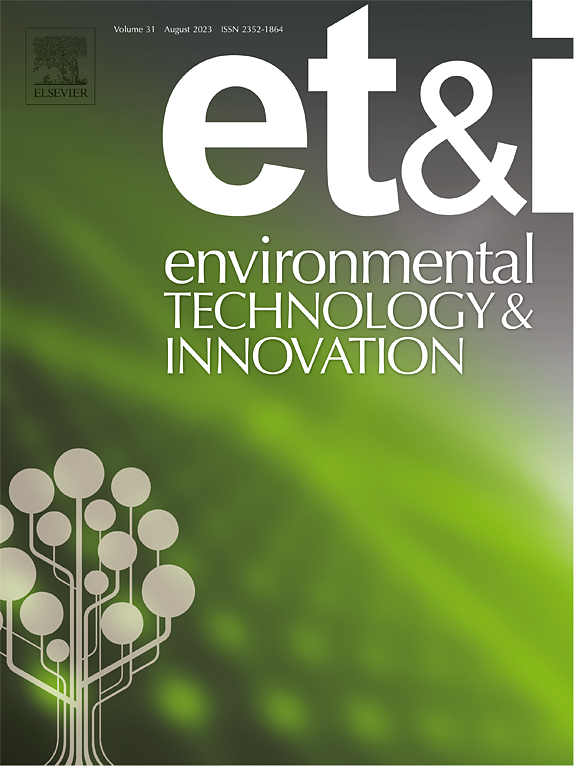看不见的威胁:水烟中存在微塑料
IF 7.1
2区 环境科学与生态学
Q1 BIOTECHNOLOGY & APPLIED MICROBIOLOGY
引用次数: 0
摘要
微塑料(MPs)是一种无处不在的废物形式,也是一个新兴的公共卫生问题。已在各种环境基质、蔬菜和食品中检测到MPs,但目前尚无烟草样品的数据。本研究旨在评价新鲜烟草(果味烟草和普通烟草)及其消费后烟叶(PWTWs)中MPs的浓度和特性。结果表明,鲜香烟草中MPs颗粒的平均± SD浓度为4.64 ± 1.59项/g,而普通烟草中MPs颗粒的平均± SD浓度为0.79 ± 0.12项/g (p <; 0.05)。在调味烟草PWTW中,MPs浓度为0.82 ± 0.07项/g,而在普通样品PWTW中未发现颗粒(p <; 0.05)。果味烟草中MPs的最大粒径为10 ~ 50μm,新鲜普通烟草中最大粒径为<; 50μm (250 ~ 500μm)。在两种烟草样品中检测到的MP颗粒中,纤维是最常见的形状,白色/透明和黑色是所有样品的主要颜色。SEM-EDS(扫描电子显微镜和能量色散x射线光谱)分析显示,碳和氧(C和O)是水烟中MPs中检测到的主要元素,证实了这些颗粒本质上是塑料的。为了更好地理解这些发现的含义,需要进一步的研究来评估MP的其他特征,如聚合物类型。此外,调查这些MPs的潜在毒性对于了解它们对吸烟者健康的影响至关重要。本文章由计算机程序翻译,如有差异,请以英文原文为准。
Unseen threats: Microplastic presence in waterpipe tobacco
Microplastics (MPs) are a ubiquitous form of waste and an emerging public health concern. MPs have been detected in various environmental matrixes, vegetables, and foods, but no data currently exists for tobacco samples. This research aimed to evaluate the concentration and characteristics of MPs in fresh tobaccos (fruit-flavored and regular) and their post-consumption waterpipe tobacco wastes (PWTWs). Our findings showed that the mean ± SD concentration of MPs particles in fresh flavored tobacco was 4.64 ± 1.59 items/g, whereas it was 0.79 ± 0.12 items/g in regular samples (p < 0.05). In the case of PWTW of flavored tobacco, the MPs concentration was 0.82 ± 0.07 items/g, while no particle was found in the PWTW of regular samples (p < 0.05). The most dominant size of MPs in fruit-flavored tobacco was 10–50 μm, while particles < 50μm (250–500μm) were the most frequent particles in fresh regular tobacco. Fibers were the most common shape among MP particles detected in both tobacco samples, with white/transparent and black being the predominant colors across all samples. The SEM-EDS (scanning electron microscope and energy-dispersive X-ray spectroscopy) analysis revealed that carbon and oxygen (C and O) were the primary elements detected in MPs present in waterpipe tobacco, confirming that these particles are plastic in nature. To better understand the implications of these findings, further research is needed to assess additional MP characteristics, such as polymer type. Moreover, investigating the potential toxicity of these MPs is crucial for understanding their effects on smokers' health.
求助全文
通过发布文献求助,成功后即可免费获取论文全文。
去求助
来源期刊

Environmental Technology & Innovation
Environmental Science-General Environmental Science
CiteScore
14.00
自引率
4.20%
发文量
435
审稿时长
74 days
期刊介绍:
Environmental Technology & Innovation adopts a challenge-oriented approach to solutions by integrating natural sciences to promote a sustainable future. The journal aims to foster the creation and development of innovative products, technologies, and ideas that enhance the environment, with impacts across soil, air, water, and food in rural and urban areas.
As a platform for disseminating scientific evidence for environmental protection and sustainable development, the journal emphasizes fundamental science, methodologies, tools, techniques, and policy considerations. It emphasizes the importance of science and technology in environmental benefits, including smarter, cleaner technologies for environmental protection, more efficient resource processing methods, and the evidence supporting their effectiveness.
 求助内容:
求助内容: 应助结果提醒方式:
应助结果提醒方式:


